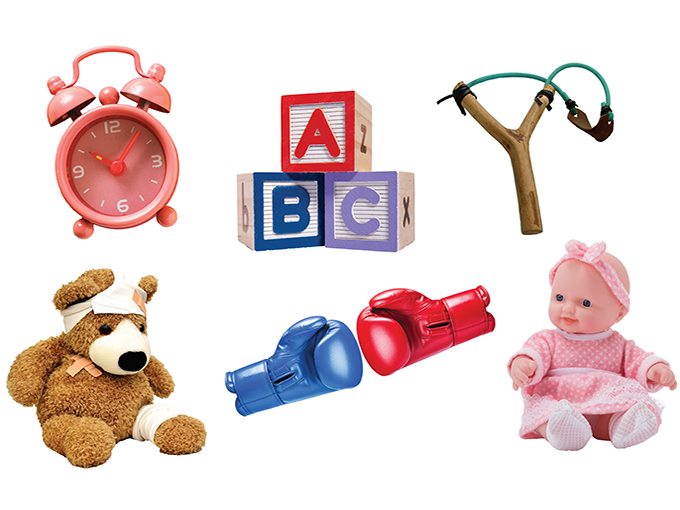A year after retail giant Toys “R” Us pulled the plug on its US operations—resulting in the closure of more than 700 remaining stores—TRU announced its return as Tru Kids. But in the wake of the retailer’s shuttering, IP owners and toymakers had to completely revamp their distribution strategies. And in the radio silence that followed Tru Kids’ February announcement (the company’s only comment on strategy was a promise to launch an “omnichannel retail experience” for its brands in the US), toycos have little to go on as they try to determine how to move forward. Industry experts weigh in on what Tru Kids’ return means, and whether or not there is light at the end of the toy aisle.
Screaming, crying, perfect storms
When Toys “R” Us closed its doors, Jay Foreman, president and CEO of Florida-based Basic Fun!, closed a door of his own. “I went into a room, yelled, screamed and kicked around the furniture for awhile,” he says. “Then I shook it off and went back to work.”
In the aftermath of TRU’s demise, Basic Fun! focused on more diverse retailers like Walmart, Target and Amazon, whose success is not tied to the fourth quarter and holiday sales. “Toys ‘R’ Us was operating in a window that’s very narrow, selling a lot of products and making money for three or four months a year, and then barely surviving the other eight,” says Foreman. “I don’t know if that’s a model that can survive anymore.”
Filling the vacuum
“One very important way the retail landscape has changed is that many existing companies have doubled down on toys to fill the vacuum left by TRU,” says Carol Spieckerman, president of Arkansas-based consultancy firm Spieckerman Retail. Walmart expanded its inventory of kids playthings by 30% in stores and 40% online. Target, meanwhile, grew its toy offerings with more than 2,500 new and exclusive items.
“The clock is ticking,” Spieckerman says. “Things move really fast in retail and memories are short. Competitors have been aggressive about filling the void, and brand marketers have been licking their wounds and moving on. If Tru Kids is going to try to do something, it needs to move fast.”
One step forward, two steps back
“Frankly speaking, I think the return of Toys “R” Us in the US is a long way away—if it ever even happens,” says Basic Fun!’s Foreman. “They’re not coming back. They have no plan.” He calls Tru Kids’ February announcement cavalier, and he was frustrated by the company’s failure to acknowledge its missteps or provide concrete details for its plan moving forward.
“They just put out a press release to gin up some interest in what they’re doing. It’s more of a hope and a prayer, at this point, than a reality,” Foreman says. “All of us are looking forward. Thinking about TRU, at this point, is looking backwards.”
Using it as a crutch
Underlying Tru Kids’ return is the reality that the closure of Toys “R” Us left a bad taste in people’s mouths, says Isaac Larian, CEO of MGA Entertainment in California. “People are not happy. We are not happy. We lost as much as US$18 million.”
But MGA had a successful 2018. (According to market research firm The NPD Group, eight of the 10 top-selling traditional toy items in the US last year were L.O.L. Surprise! products.) And Larian says toymakers blaming TRU for their falling sales have no one to blame but themselves, as the declines are really the result of consumers being tired of toys inspired by tentpole movie franchises. “They’re using TRU as a crutch. Will they keep blaming TRU for the next 10 years? Move on. Change. There are no excuses.”
Looking to a brick-and-mortar future
In addition to waiting to see whether Tru Kids can succeed, many in the industry were looking for a company to step into TRU’s shoes as a launch pad for new properties. “It is still necessary, and whether multiple platforms or a single retailer steps up, somebody is going to recognize there is a void and fill it,” says Lloyd Mintz, SVP of global consumer products at California’s Genius Brands.
Without the breadth and depth of TRU’s shelf space, Mintz says it’s important for IP owners to reach out to other retailers earlier than they may have in the past to discuss new properties. “It’s crucial to bring major retailers into the discussion earlier [to explain what] the property is, and what role the retailer could play in its development and launch—much, much earlier than we ever have before.”
But Mintz can envision a future for Toys “R” Us stores in the US, particularly amidst rumors that the company plans to open a number of smaller locations in time for the 2019 holiday season. “I see a brick-and-mortar play in Tru Kids’ future. It could implement pop-up locations during the holidays, or have a footprint within an existing retailer that would serve the toy market,” he says.
“Every retailer needs to have a footprint in every major retail realm, so Tru Kids is going to have to be a blend of different online and physical experiences to serve the needs of customers. That might differ from region to region, but I think Tru Kids is going to have to be part of every equation in every region, eventually.”






















